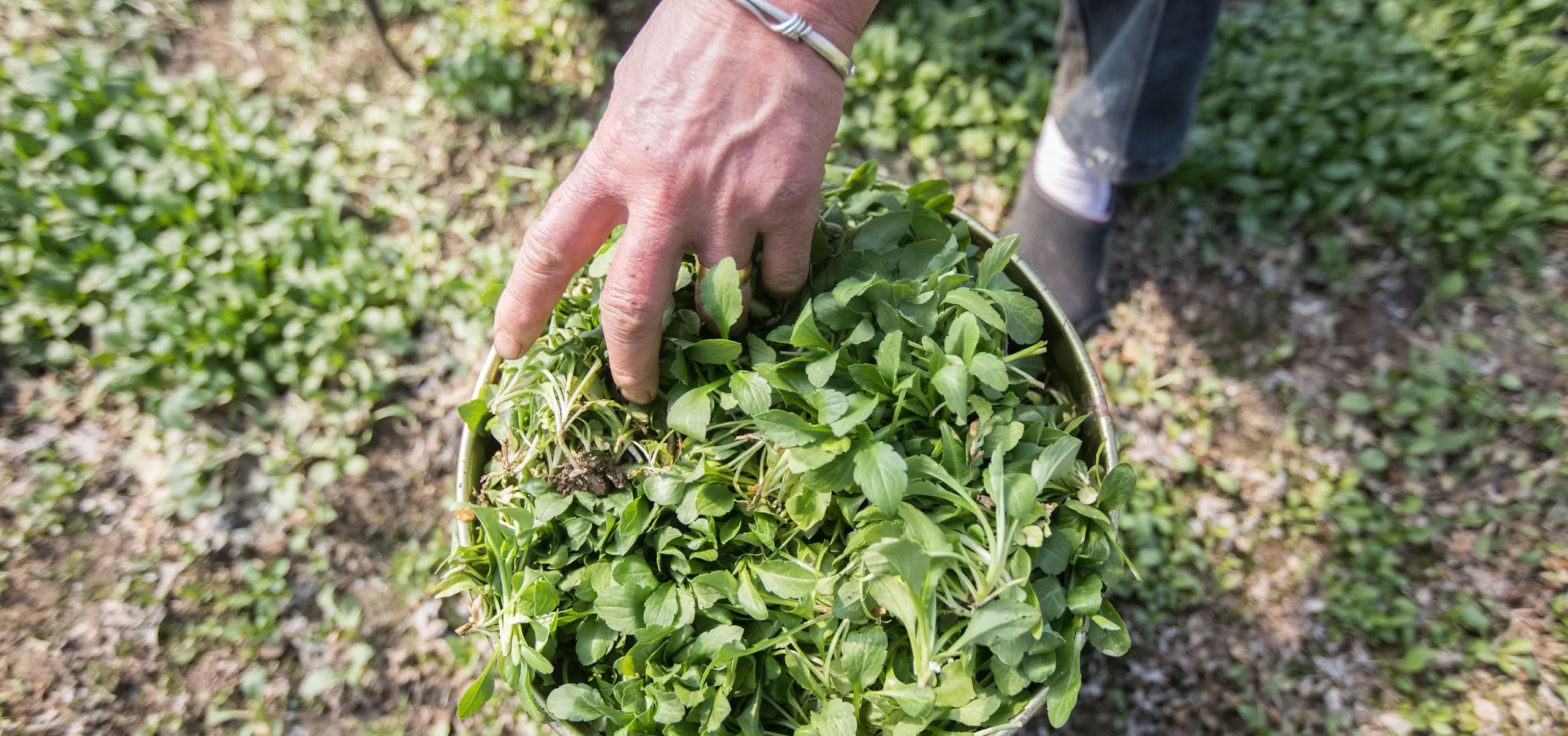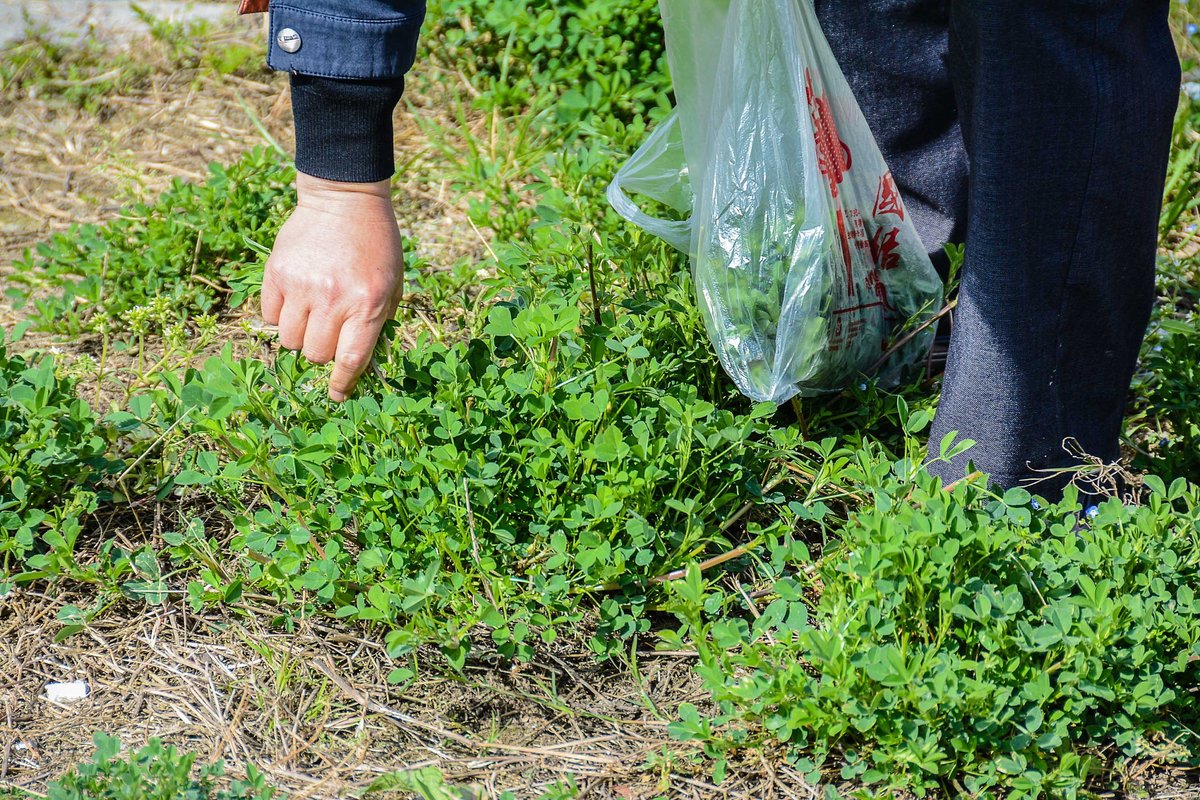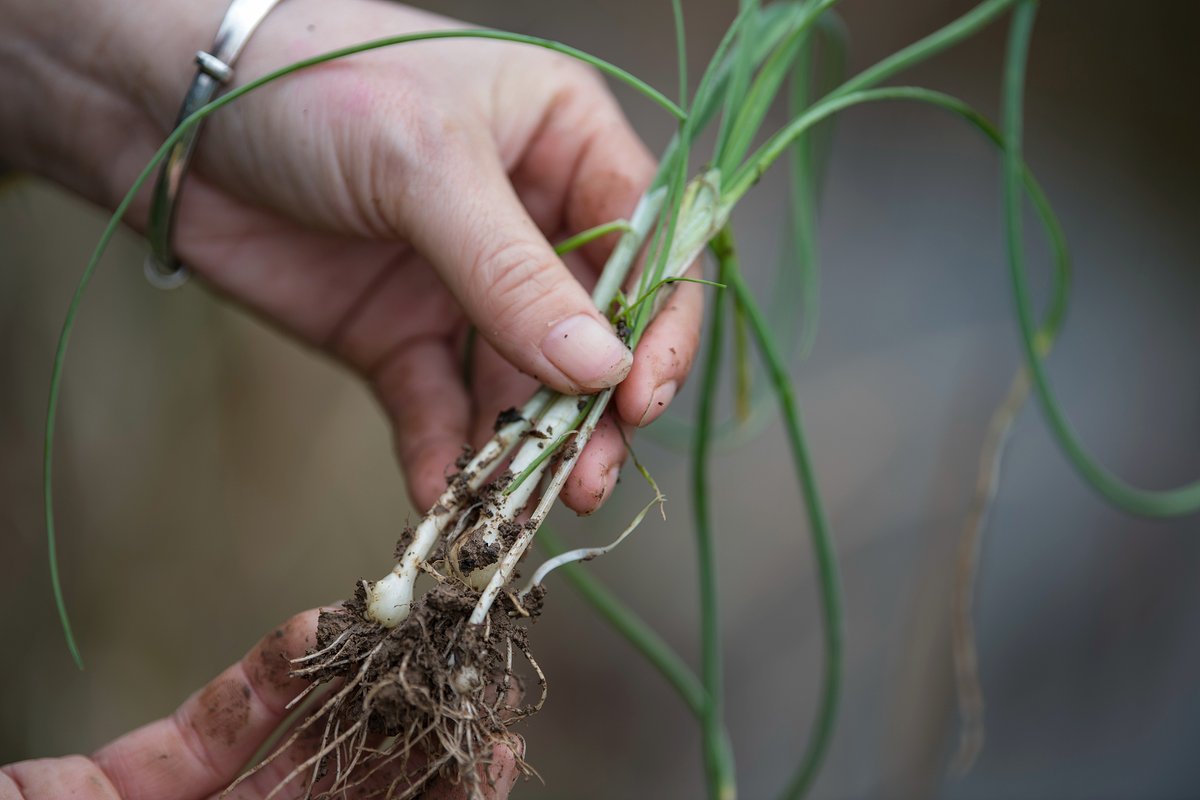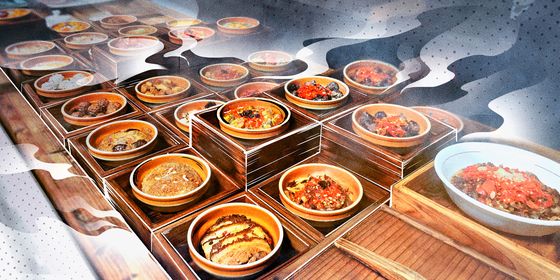Spring in Ningbo is a time for hunting delicious wild vegetables
When the Monkey King (Sun Wukong) and his band of travelers save a poor woodcutter from the clutches of an evil mountain-dwelling monster in the classic 16th-century fantasy novel Journey to the West, the victim and his old mother reward them with a feast. But without the money to purchase lavish ingredients, they put together the banquet with over 40 plants and vegetables found in the wild.
Wild vegetables are still common ingredients in many dishes around China today, while in the coastal city of Ningbo, locals often spend their spring leisure time hunting for delicacies that sprout freely from the ground. Many locals believe these wild spring ingredients can help rejuvenate the body after winter and provide it with energy. A well-known saying in Ningbo is “Eat shoots in spring, eat roots in winter (春吃芽,冬吃根),” meaning that in the spring, people should eat vegetables that shoot up from the earth, while in winter, they should consume plants that grow in the ground.
While there are dozens of wild vegetables that grow in Ningbo, locals have a few favorites. Indian aster, a green herb with serrated leaf edges, red roots, and a distinctive smell, is one such favorite.
Its Chinese name is malantou (马兰头), sometimes written as 马拦头, which literally means to make a horse turn its head. According to a local legend, the tender taste of malantou in the wild is enough to make a horse reluctant to move on from where they grow. Perhaps because of the name, malantou has become a farewell gift, cooked when one wants to wish a friend a pleasant journey and express regrets at saying goodbye.
Malantou grows everywhere, from roadsides to farmland. Residents, with a pair of scissors and a basket in hand, search for patches to harvest after rainfall, when malantou sprouts the quickest.
A simple recipe involves chopping the leaves up, mixing together with slices of tofu and wild bamboo shoots, and adding a few drops of sesame oil. A folk tale says that the Kangxi Emperor of the 17th and 18th centuries once tried the dish while on a tour of southern China and proclaimed: “I never expected the people to have such fragrant food!”
Shepherd’s purse, or jicai (荠菜) in Chinese, known also by the nickname “flower-face vegetable (花脸菜),” is another favorite in Ningbo. It grows close to the ground and its leaves spread out like a green flower.
Jicai grows early in spring, and tastes fresh with a hint of sweetness. Locals often add jicai to tofu and shrimp soup, or fill wontons with jicai and pork.
Street peddlers sell crispy jicai spring rolls, mixed in with bamboo shoots, eggs, and bean curd. Fried spring rolls dipped in rice vinegar are a quintessential spring snack in Ningbo.
Not every wild vegetable smells as fragrant as jicai. Known as the “vegetable durian,” xiangchun (香椿), or Chinese cedar, is a pungent leaf that diners either love or hate. For those who are addicted to its rich smell, there’s no better way to start the day than with rice porridge and pickled xiangchun.
Xiangchun is something of a delicacy, with the harvest period lasting only 10 days a year. It’s sold in markets for around 100 yuan per half kilogram. Its strong smell and taste, though, means that only a small handful is needed to cook with.
Xiangchun trees grow mainly in southern areas of China, and when the harvest time comes, locals take to “hooking” the leaves off the tall trees with a long bamboo pole with a hook on the end. While one person hooks the leaves from high up on the tree, another waits with a basket underneath ready to catch the falling leaves.
Xiangchun is normally best harvested just before Grain Rain (谷雨), the sixth of the 24 solar terms which falls around April or May and marks the end of spring, as this is when the leaves are most tender. Xiangchun is often paired with free-range chicken eggs, which help to balance the sometimes overpowering taste of the leaves. Another dish pairs xiangchun with tofu, a combination 20th-century author Wang Zengqi wrote about in The Taste of Life (《人间滋味》): “Take a bite of xiangchun with tofu and you won’t forget it for three springs.”
Another common ingredient is muxu (苜蓿), which looks similar to clover and is known as caozi (草籽) by Ningbo locals. The gentle tasting green leaves stir fried with rice cakes is a common dish in the spring in Ningbo, and is often given as a treat to young children, since it is soft and easy to digest.
Stir-fried caozi with a few spoonfuls of yellow rice wine is also a popular appetizer, with the fragrant alcohol making the caozi particularly tender and fresh.
Other wild vegetables are harvested for their supposed medicinal purposes as much as their taste. A traditional saying says that eating scallions in spring can relax the body. But wild spring onions (野葱) with roast pork or grilled river carp is also a delicious spring prospect.

















